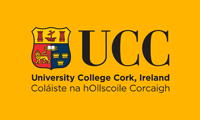News
The microbial world at the touch of a button

The microbial world at the touch of a button
The microbial world at the touch of a button:
Handheld DNA sequencers show promise for monitoring microbes during food production
 Handheld devices are well suited to environmental monitoring during food production, and have key advantages in ease of use and in identifying a broad variety of bacteria, according to a new study published in the journal npj science of food (a Nature partner journal). The study, by researchers from the Teagasc Food Research Programme and APC Microbiome Ireland SFI Research Centre, is the first to test handheld DNA sequencers as a routine microbial monitoring solution for food production facilities. Identifying the microbes present in our food is important. After all, they can cause food spoilage and disease, so routine checks on the microbial life in food production facilities is a necessity. However, current techniques to achieve this, while tried and tested, have some limitations. [caption id="" align="alignleft" width="103"]
Handheld devices are well suited to environmental monitoring during food production, and have key advantages in ease of use and in identifying a broad variety of bacteria, according to a new study published in the journal npj science of food (a Nature partner journal). The study, by researchers from the Teagasc Food Research Programme and APC Microbiome Ireland SFI Research Centre, is the first to test handheld DNA sequencers as a routine microbial monitoring solution for food production facilities. Identifying the microbes present in our food is important. After all, they can cause food spoilage and disease, so routine checks on the microbial life in food production facilities is a necessity. However, current techniques to achieve this, while tried and tested, have some limitations. [caption id="" align="alignleft" width="103"] Prof. Paul Cotter[/caption] “Microbiology testing in the food chain has, and continues to, rely on older, classical microbiology testing such as the use of agar and petri dishes,†explained the study’s senior author, Professor Paul Cotter. “This is a time-consuming approach and only microorganisms that are being specifically tested for are identified.†DNA sequencing offers an alternative. Instead of culturing bacterial samples in petri dishes, it can rapidly analyse bacterial DNA and identify the species in a sample. The catch? Conventional DNA sequencing involves expensive lab-based equipment and only highly trained lab technicians can perform the procedure and analyse the results. [caption id="" align="alignleft" width="103"]
Prof. Paul Cotter[/caption] “Microbiology testing in the food chain has, and continues to, rely on older, classical microbiology testing such as the use of agar and petri dishes,†explained the study’s senior author, Professor Paul Cotter. “This is a time-consuming approach and only microorganisms that are being specifically tested for are identified.†DNA sequencing offers an alternative. Instead of culturing bacterial samples in petri dishes, it can rapidly analyse bacterial DNA and identify the species in a sample. The catch? Conventional DNA sequencing involves expensive lab-based equipment and only highly trained lab technicians can perform the procedure and analyse the results. [caption id="" align="alignleft" width="103"] Dr. Aoife McHugh[/caption] This isn’t a good fit for routine microbial surveillance in busy food production facilities. A newer technology offers rapid DNA sequencing with an easy-to-use handheld device, but no-one had tested its potential in food production - until now. Professor Cotter and colleagues, led by Dr Aoife McHugh, set out to investigate how such portable sequencing technology would compare with lab-based sequencing, using swab samples from a working dairy facility. Strikingly, the handheld device proved to be similar to the larger lab-based sequencing system in terms of the number of bacterial species it could identify in the samples, suggesting it has potential as a routine monitoring device in food production. However, the small device requires a minimum amount of DNA before it can function correctly. In the well-cleaned dairy facility there simply weren’t enough bacteria in many of the samples, so the researchers had to perform an extra step to amplify the bacterial DNA before there was enough to analyse. This is a minor hurdle, and further developments with the technology may help to overcome it. “As microbiologists, the use of DNA sequencing has revolutionised our understanding of fascinating microbial communities at the bottom of oceans, the tops of icebergs and a huge range of other environments,†said Professor Cotter. “While such studies have the potential to impact on our lives in the longer term, the use of these technologies to enhance food quality and safety can have a very rapid impact on everyday life. This study represents a key step towards a day when non-experts can use DNA sequencing tools to carry out microbiology testing in the food chain.†[caption id="attachment_10011" align="aligncenter" width="629"]
Dr. Aoife McHugh[/caption] This isn’t a good fit for routine microbial surveillance in busy food production facilities. A newer technology offers rapid DNA sequencing with an easy-to-use handheld device, but no-one had tested its potential in food production - until now. Professor Cotter and colleagues, led by Dr Aoife McHugh, set out to investigate how such portable sequencing technology would compare with lab-based sequencing, using swab samples from a working dairy facility. Strikingly, the handheld device proved to be similar to the larger lab-based sequencing system in terms of the number of bacterial species it could identify in the samples, suggesting it has potential as a routine monitoring device in food production. However, the small device requires a minimum amount of DNA before it can function correctly. In the well-cleaned dairy facility there simply weren’t enough bacteria in many of the samples, so the researchers had to perform an extra step to amplify the bacterial DNA before there was enough to analyse. This is a minor hurdle, and further developments with the technology may help to overcome it. “As microbiologists, the use of DNA sequencing has revolutionised our understanding of fascinating microbial communities at the bottom of oceans, the tops of icebergs and a huge range of other environments,†said Professor Cotter. “While such studies have the potential to impact on our lives in the longer term, the use of these technologies to enhance food quality and safety can have a very rapid impact on everyday life. This study represents a key step towards a day when non-experts can use DNA sequencing tools to carry out microbiology testing in the food chain.†[caption id="attachment_10011" align="aligncenter" width="629"] MinION sequencing followed by MEGAN taxonomic classification of a simple mock community. a Taxonomic classification following 16S and whole metagenome (WMGS) sequencing. Also shown are expected relative abundances. b De novo assembly of genomes by the canu assembler, followed by mapping back to original known genomes, to illustrate coverage at 97% identity. 4 genomes, with 6 plasmids illustrated, of which 4 genomes and 5 plasmids had sequences aligned at 97% identity.[/caption] Full reference: “Microbiome-based environmental monitoring of a dairy processing facility highlights the challenges associated with low microbial-load samplesâ€Â Aoife J. McHugh, Min Yap, Fiona Crispie, Conor Feehily, Colin Hill, and Paul D. Cotter (2021) npj science of food. https://www.nature.com/articles/s41538-021-00087-2 About: Teagasc: Teagasc – the Agriculture and Food Development Authority – is the national body providing integrated research, advisory and training services to the agriculture and food industry and rural communities in Ireland. The Teagasc Food Research Programme is based at research centres in Dublin and Cork and provides sustainable science-based innovations and solutions for the Irish Food Industry. Contact: Eric Donald (eric.donald@teagasc.ie) APC Microbiome Ireland SFI Research Centre: APC Microbiome Ireland (APC; http://apc.ucc.ie ) is a world-leading SFI Research Centre based in University College Cork which was formed in 2003 with funding from Science Foundation Ireland and in conjunction with key industry partners. It investigates the interaction between microbes and the host in health and disease and explores microbiome-based diagnostics and therapeutics. Contact: Aimee Stapleton (aimee.stapleton@ucc.ie)
MinION sequencing followed by MEGAN taxonomic classification of a simple mock community. a Taxonomic classification following 16S and whole metagenome (WMGS) sequencing. Also shown are expected relative abundances. b De novo assembly of genomes by the canu assembler, followed by mapping back to original known genomes, to illustrate coverage at 97% identity. 4 genomes, with 6 plasmids illustrated, of which 4 genomes and 5 plasmids had sequences aligned at 97% identity.[/caption] Full reference: “Microbiome-based environmental monitoring of a dairy processing facility highlights the challenges associated with low microbial-load samplesâ€Â Aoife J. McHugh, Min Yap, Fiona Crispie, Conor Feehily, Colin Hill, and Paul D. Cotter (2021) npj science of food. https://www.nature.com/articles/s41538-021-00087-2 About: Teagasc: Teagasc – the Agriculture and Food Development Authority – is the national body providing integrated research, advisory and training services to the agriculture and food industry and rural communities in Ireland. The Teagasc Food Research Programme is based at research centres in Dublin and Cork and provides sustainable science-based innovations and solutions for the Irish Food Industry. Contact: Eric Donald (eric.donald@teagasc.ie) APC Microbiome Ireland SFI Research Centre: APC Microbiome Ireland (APC; http://apc.ucc.ie ) is a world-leading SFI Research Centre based in University College Cork which was formed in 2003 with funding from Science Foundation Ireland and in conjunction with key industry partners. It investigates the interaction between microbes and the host in health and disease and explores microbiome-based diagnostics and therapeutics. Contact: Aimee Stapleton (aimee.stapleton@ucc.ie)


